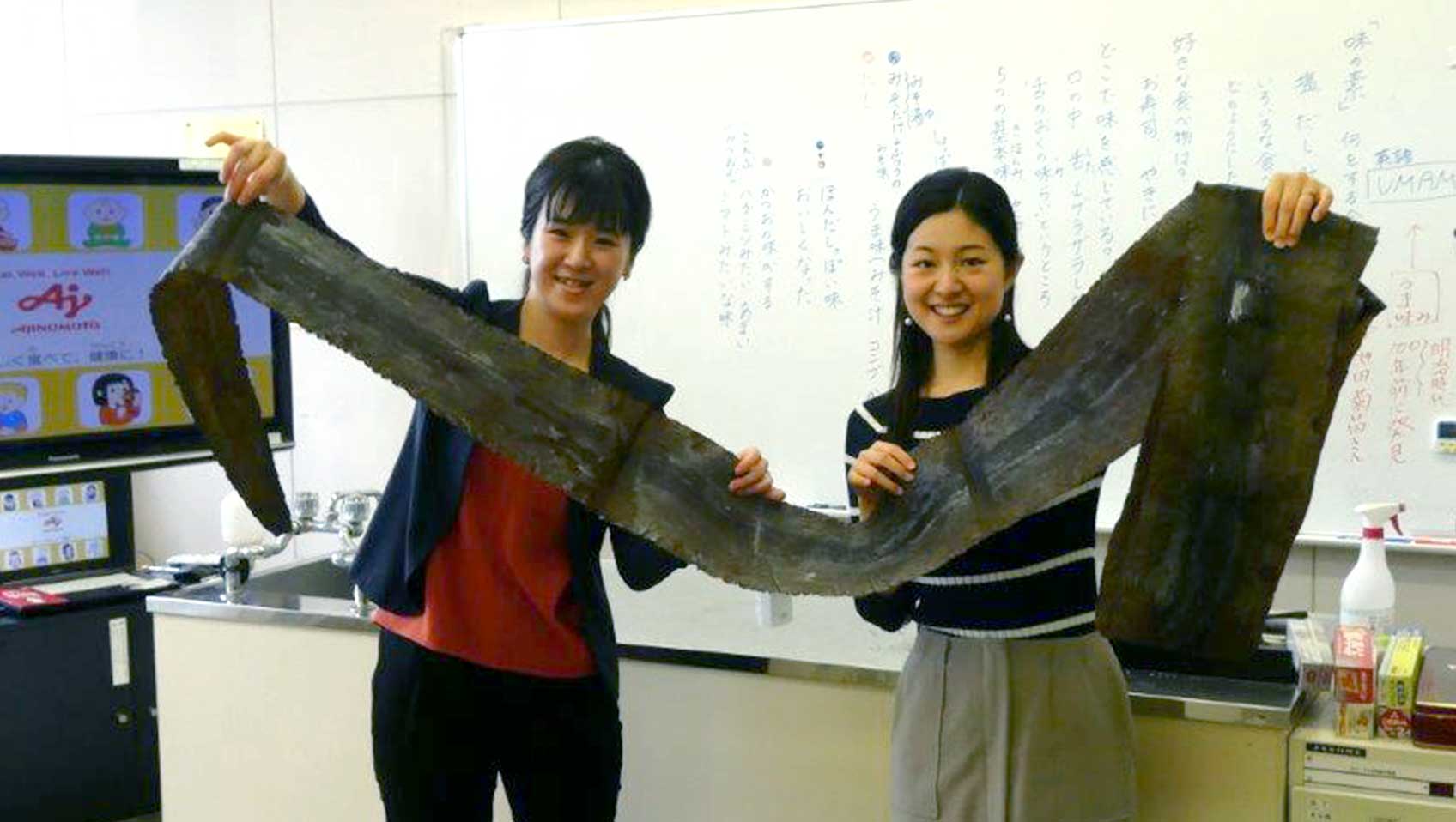Everyday we’re bombarded with sounds: car horns, crosswalk signals, emergency vehicle sirens—not to mention people talking on their phones and those ubiquitous text notifications. Not everyone, however, perceives sound the same way. For those with hearing impairments, the hubbub of daily life can be inaudible or distorted.
Such is the case with Ajinomoto Group employees Sayaka Adachi and Natsuki Watanabe, who suffer from congenital sensorineural hearing loss. For them, sounds come across muffled or full of echoes, even with a hearing aid. Without one, loud noises sound faint—the blare of a passing siren might seem like the distant roar of jet engines—while other sounds that people with normal hearing take for granted (for example, someone talking on a phone beside them) are completely inaudible. In order to hear words clearly, they use a hearing device that not only amplifies sound but also adjusts tone.
In June 2017, Sayaka and Natsuki visited Kawasaki Municipal School for the Deaf, outside Tokyo, as part of a program Ajinomoto Group started in 2006 to instill healthy eating habits by teaching children about taste. It reaches some 10,000 youngsters annually. Sayaka and Natsuki were eager to conduct this session, for the first time, with children who have hearing impairments similar to theirs.
The two volunteers began by explaining the five basic tastes: sweet, salty, bitter, sour, and umami. Then they invited the students to sample some dashi—a traditional, umami-rich broth essential to Japanese cuisine—and introduced them to the various ingredients, which include kombu, katsuobushi (dried tuna flakes), shiitake mushrooms, and niboshi (baby sardines). Next, they gave them different varieties of miso soup to taste.

Natsuki, left, and Sayaka who championed the special session.
Throughout the lesson, Sayaka and Natsuki used visual aids, such as color-coded stickers to label the tasting cups. They also used a simplified form of sign language that speeds learning, plus exaggerated mouth movements to facilitate lip-reading. They designed their lesson plan so students could experience the pleasures and subtleties of taste without the need for language.
The volunteers found that while working with hearing-impaired children poses challenges, their heightened sensitivity to taste made the task especially fun and rewarding. For their part, the children were amazed at the range of flavors found even in something as simple and basic as a bowl of miso soup.

